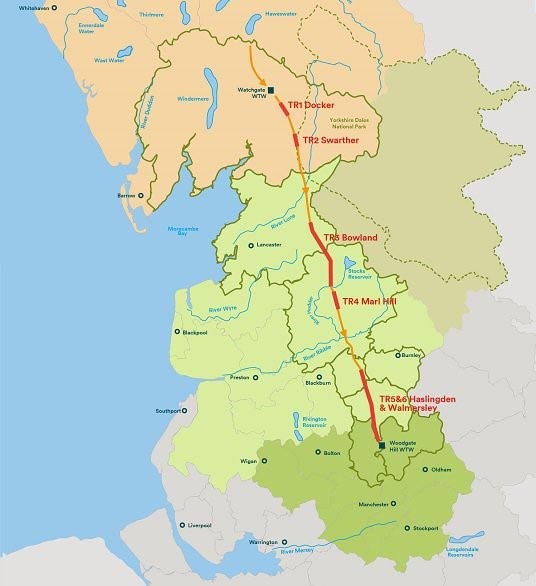Pumping Testing - Haweswater Aqueduct
- Client: Soil-Engineering
- Location: Rossendale, Lancashire
- Duration: September 2020 - December 2020
Project Overview
The Haweswater Aqueduct built between 1933 and 1955 is a 109 km pipeline which has been supplying water to people in the North West for over sixty years. Following concerns of risks that may impact the future water supply, investigations have been carried out since February 2019 to aid the development of proposals for future works on the aqueduct. To that end, Stuart Wells Ltd (SWL) carried out three pumping tests, as part of the site investigation project for the Haweswater Aqueduct Resilience Programme (HARP).
The Objectives of the Pumping Tests:
- Provide additional information to determine the hydraulic properties of the subsurface carboniferous bedrock and the hydraulic connectivity of the bedrock units.
- These parameters are then used by the main works contractor to design the temporary groundwater control measures for shaft construction.
- The testing also provided the necessary hydrogeological data required to support applications for the necessary Environmental Permits for groundwater abstraction and discharge.
Services Provided By SWL
 Provision and installation of pump testing equipment (including generator power supply), data logger monitoring of observational wells, water sampling and analysis, as well as factual reporting of the results obtained.
Provision and installation of pump testing equipment (including generator power supply), data logger monitoring of observational wells, water sampling and analysis, as well as factual reporting of the results obtained.
Each pumping test comprised of pre-test monitoring, an equipment test, a step test, a constant rate test (72 hours), and recovery monitoring. A summary of the flow rates and installation depths are summarised below:
Downhole level loggers and vibrating wire piezometers were utilised to measure groundwater levels at one minute intervals throughout the testing period. Whilst, manual water level and flow meter readings taken during the normal working day. A barometric data-logger was used to record the ambient temperature and pressure to allow us to compensate the water level data-logger data for the atmospheric pressure once downloaded.
We undertook groundwater sampling and analysis for a host of common contaminants such as hydrocarbons, heavy metals, turbidity, pesticides, and physical components. In addition, we also completed water quality measurements throughout the testing programmme at the well head.
We also worked with the Geophysical Contractor to enable flow testing in both ambient and pumped well conditions.
Related Case Studies
- Pumping Testing - HS2 Ventilation Shaft
- Pumping Testing - Lower Thames Crossing
- Permeability Test - Lower Thames Crossing
- Permeability Test - HS2 Greatworth
- Packer Testing - EKFB JV Wendover
- Geophysical Testing - Hinkley Point C
- Geophysical Testing - HS2 Wendover Green Tunnel
- Packer and pumping testing - Harrisons Farm
- Geophysical Testing - Montrose Distillery
- Shoreham Flood Defence

